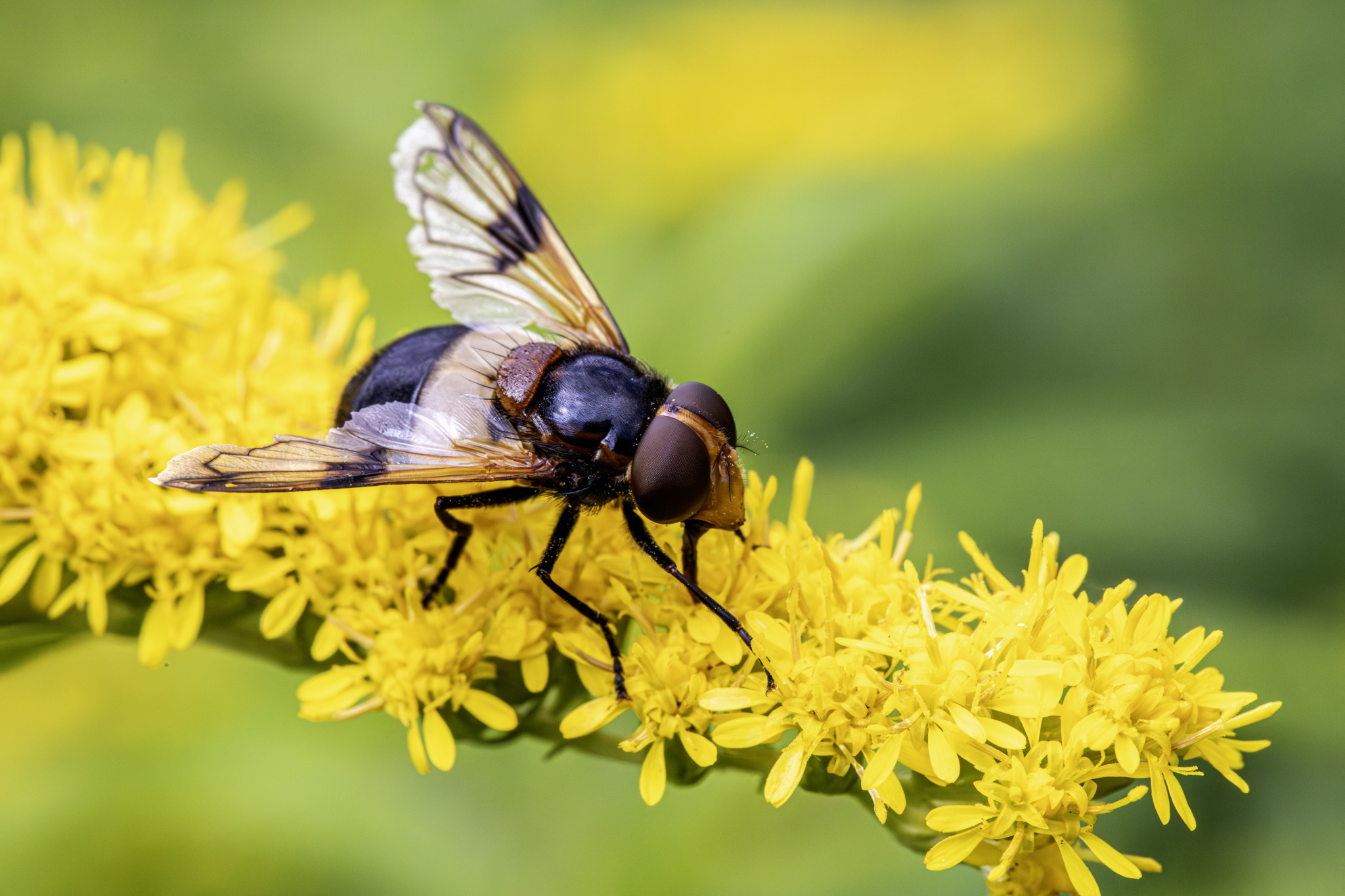The Pellucid Fly, also known as the Bumblebee Hoverfly (Volucella pellucens), is a striking species of hoverfly known for its distinctive appearance and interesting life cycle. Here’s an overview of this fascinating insect:
Description
- Size: Volucella pellucens is a relatively large hoverfly, measuring about 12-15 millimeters in length.
- Appearance:
- Body: The body is robust with a predominantly black thorax and abdomen. A key identifying feature is the broad, white or pale yellow band across the second segment of the abdomen, giving it a striking contrast.
- Wings: The wings are clear and slightly tinted, often held outwards when the fly is at rest.
- Head: The head features large, reddish-brown compound eyes and a short, robust proboscis adapted for feeding on nectar.
- Legs: The legs are black and relatively long, suited for hovering and perching on flowers.
Habitat
- Distribution: The Pellucid Fly is widespread across Europe and parts of Asia, favoring temperate regions.
- Preferred Environment: They are commonly found in woodlands, gardens, meadows, and areas with abundant flowering plants. They prefer habitats where they can find suitable nesting sites for their larvae.
Behavior and Ecology
- Diet: Adult Volucella pellucens primarily feed on nectar and pollen, making them important pollinators. They are frequently seen hovering around flowers and feeding.
- Larval Parasitism: The larvae of Volucella pellucens are scavengers and parasites in the nests of social bees and wasps, particularly bumblebees. Female flies lay their eggs in the nests of these insects, where the larvae feed on detritus, dead bees, and other organic material, helping to keep the nest clean.
- Life Cycle: The lifecycle includes the following stages: egg, larva, pupa, and adult. The larvae develop inside the bee or wasp nests, pupate there, and the adults emerge the following year.
Conservation Status
- Threats: The main threats to Volucella pellucens include habitat loss due to urbanization, agricultural expansion, and the use of pesticides, which can affect both the adult flies and their bee and wasp hosts.
- Conservation Efforts: Conservation efforts focus on preserving natural habitats, promoting organic farming practices, and ensuring the availability of flowering plants to support adult hoverflies and their pollinator role.
Interesting Facts
- Mimicry: Volucella pellucens exhibits Batesian mimicry, resembling bumblebees. This mimicry helps protect them from predators by making them appear more dangerous than they are.
- Pollination: These flies are effective pollinators, visiting a variety of flowers and contributing to the pollination of many plant species.
Observing Volucella pellucens
- Best Places: To observe Pellucid Flies, visit gardens, meadows, and woodland edges with plenty of flowering plants during the summer months.
- Watching Tips: Look for them hovering around flowers or resting on leaves. Their distinctive white band and bee-like appearance make them relatively easy to identify. Observing their behavior around flowers can provide insight into their role as pollinators.
The Pellucid Fly (Volucella pellucens) is a remarkable example of the complexity and diversity within ecosystems, showcasing fascinating behaviors and adaptations. Observing these flies can enhance our understanding of the intricate relationships between different species and their environments.
Visited 482 times, 19 visit(s) today
Views: 518
Subscribe to the newsletter:
